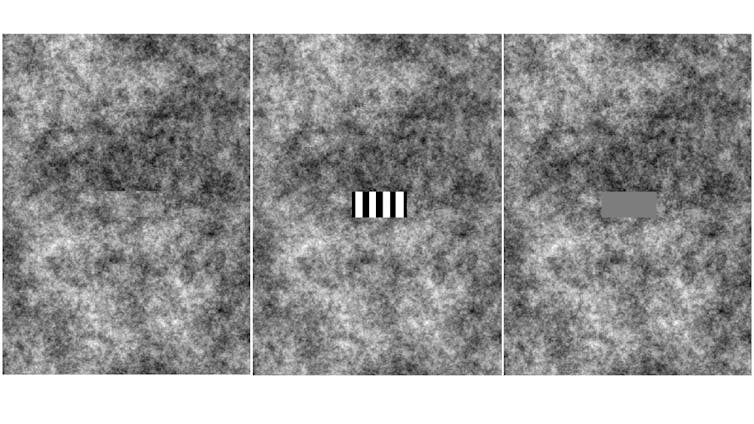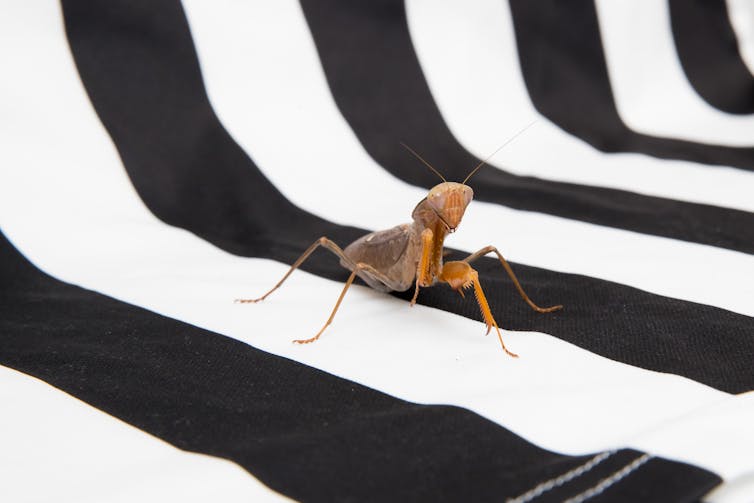For prey in the animal kingdom, one wrong move can mean death. Species have evolved camouflage to blend into their environment – some moths may share the colour of the tree bark they rest on while a lizard might resemble the sandy yellow of its desert home. But what about when these animals need to dart out from cover? How can they keep their camouflage when on the move?
A biologist called Harvey Pough stumbled on a possible answer 40 years ago. While studying northern water snakes, Pough noticed that their usually stripey pattern vanished when they moved and they instead appeared uniform brown. This made it much harder to pick them out against their rocky background.
Pough realised that the snakes were moving so fast that their light and dark stripes alternated faster than his eyes and brain could separate them. He suggested that this was no accident, but had evolved to help camouflage the snakes and hide them from their predators.

The trouble is, Pough didn’t have any empirical proof that the blurring of the stripes helped the snakes. Perhaps there was no advantage, and the blurring was just a coincidence. We decided to settle the question and test whether stripes provide camouflage to moving prey using a famously efficient predator – the praying mantis.
Fast and stripey wins the race
We put our mantids in front of a computer screen which showed animated “bugs” scuttling across a textured background. Our bugs had various patterns (see image below), including high contrast stripes but also patterns that matched their backgrounds to different degrees. When the mantids turned their heads to look at the bug, we knew they had spotted it. But at other times, the mantids showed no signs of noticing the bug. In this way, we could see which patterns were best at helping prey evade detection.

You might imagine that the best camouflage would be the bug that had the exact same texture as the wider background, as shown in the left panel above. These patterns – which replicate the surrounding environment – work really well when animals don’t move. But when they do, mantids spotted them more often than they did the plain grey ones, as shown in the right panel. That stands to reason – if your appearance exactly matches your background, your movement instantly breaks the mirage and helps predators zone in. Meanwhile, the plain grey bugs lacked any defining features that might make them stand out.
We then tried stripey bugs, with the pattern in the centre panel. These stripes resemble the black-and-white strip of our local football team, Newcastle United. As you’d expect, when moving slowly, these were pretty visible. But when moving fast enough, the stripey bugs became as well camouflaged as the grey ones, suggesting that their stripes had blurred to featureless grey. At high speed, the moving stripey bugs were even better camouflaged than stationary bugs that perfectly matched their background.

So, stripes really can be good camouflage – if you’re fast enough. But animals may benefit from patterns for a host of other reasons. For example, a bee could rely on its bright yellow-and-black stripes to warn birds that it’s bad to eat, while still appearing inconspicuous as it flies fast past a lurking mantis. In this way, it gets the best of all worlds.
The key to staying hidden while moving is to go fast and rely on camouflage that blurs well in motion. Peering into these little secrets of nature can help explain the amazing diversity of patterns that enliven scales, feathers and hides throughout the animal kingdom.
Post a Comment